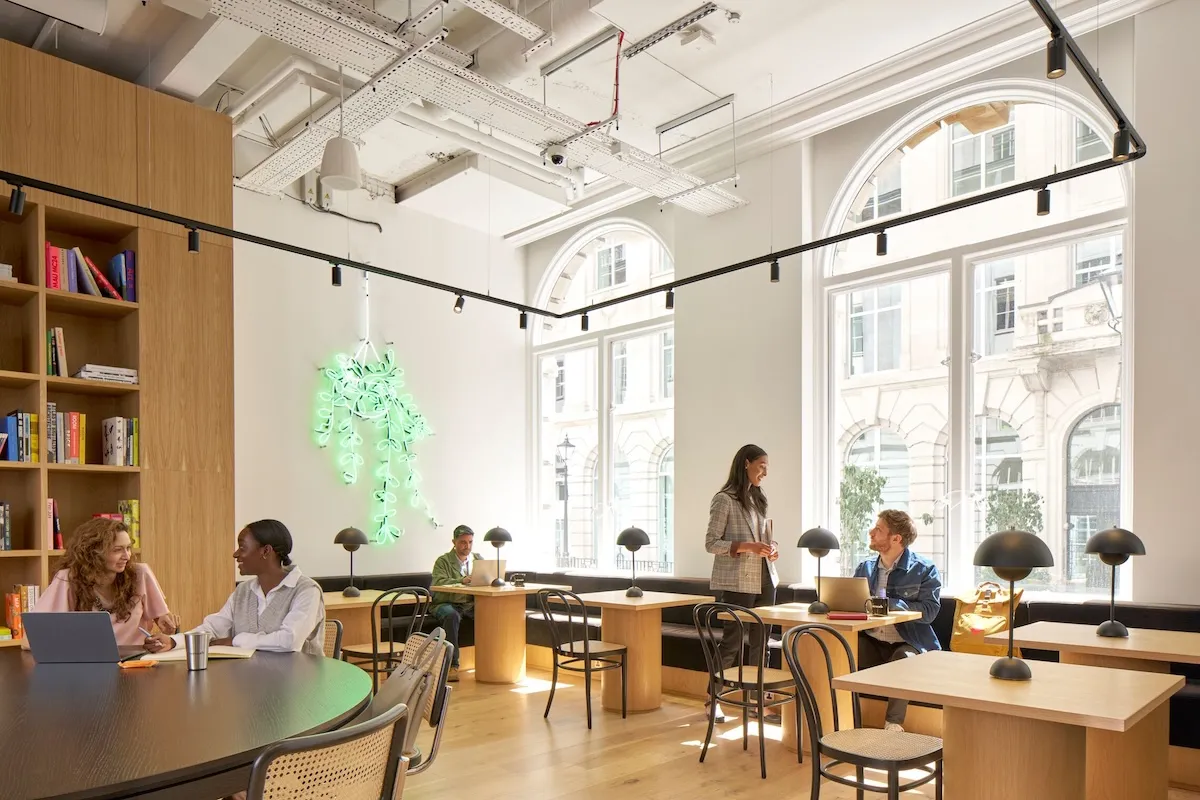It might be hard to remember the days when a work-from-home job seemed like a pipe dream. For nearly a year, many Americans have been jostling for office space with partners, toddlers, border collies, or perhaps all three. But here’s good news for anyone filled with unexpected longing for their cubicle: There are concrete and actionable strategies for changing your routine and staying productive while working from home during the pandemic.
Remote work has been increasing in the U.S. for years, with the number of workers doing so having tripled in 15 years. Still, only about 5 percent of workers were actually full-time work from home in pre-pandemic America, which means a lot of people had to adjust to working remotely in 2020. If you’re lucky enough to be working from home at the moment (only 33 percent of Americans are working remotely full-time), here are actions you can take right now to improve your work life while we keep one another safe.
1. Cultivate your workspace
For many, it’s not working from home that’s difficult—it’s that everybody’s working from home. Juggling kids who are homeschooling or roommates on conference calls makes having a dedicated workspace difficult but essential for being productive at home.
If you’re lucky enough to have an office with a door, use it. If not, try turning your desk toward a wall or a window to block out the distractions from the rest of the apartment. Stack books or use plants to create artificial borders between your home office and your at-home (and perhaps unruly) coworkers.
If all else fails, a pair of headphones—noise-canceling ones, if possible—can do wonders.
2. Try a productivity app
Whether you’re a fan of the Pomodoro technique or prefer to plant trees with the Forest app, find a digital tool that helps you complete uninterrupted bursts of work (about 20 minutes) punctuated by short breaks (about five minutes), with a longer break after several work sessions. There are likely more distractions while working from home—from the cuddly cat to a talkative roommate or partner—and using one of these techniques can help to focus on heads-down work.
Log out of social media and, when possible, put your phone on airplane mode. Productivity expert Cal Newport says in his book Deep Work that every time you turn your attention from one thing to another—even just a quick glance at your phone—it saps productivity.
3. Begin and end on time
Working from home can make achieving work-life balance even more difficult. If you’re not careful, a home office could mean you never leave work. Ellen Ernst Kossek, who studies work-life balance at Purdue University’s Krannert School of Management, writes in Organizational Dynamics that “effectively managing boundaries can help you not only effectively balance your career with your personal life demands, but can also help you be more effective as a leader who manages others.”
Set working hours and ask colleagues to respect them—and make sure you do the same. Try to set routines that book-end the day, like getting a cup of coffee in the morning when you open your computer, or taking a walk as soon as you close it. Feel free to use the “away” status on your digital communication tool.
4. Move your body
Taking breaks to exercise during the workday can help improve your concentration, enhance your creativity, and boost your work output. Opportunities to stay active can seem like they’re shrinking during the pandemic, but it may just mean getting more creative.
Apps like Down Dog have made their products free, and many local gyms and yoga studios are streaming classes. Search online for body-weight exercises, which don’t take up a lot of space in the home to do, and go for a brisk socially distanced walk outside—masked with a friend, if your locale allows—if you can do so.
5. Take advantage of the perks
Working from home is hard, but there are many upsides to breaking out of an office—take advantage of them! Do sun salutations between bursts of email, blast a pump-up ballad before a tough phone call, or use the time you would have spent commuting to finally learn that ukulele jam or finish the book that’s been on your bedside table for weeks. And yes, if it helps, you can go to work in your pajamas—just be sure to check whether you have any videoconference calls scheduled that day.
6. Use technology for more than just work
There are studies that show telework is associated with loneliness, irritability, and guilt. One of the joys of a physical office space is spontaneous connection with your coworkers, whether it’s catching up about weekend plans or hashing out a particularly challenging client call.
One fix: Don’t just use video calls for work meetings. Grab a digital coffee with your deskmate to see how they’re coping, or meet your team for a video happy hour. Create non-work-related Slack channels and schedule periods where everyone leaves their webcam on so that there’s a watercooler to gather around, even if it’s proverbial.
7. Ask for flexibility
Seek flexibility in your work hours to help with juggling child care and other household responsibilities. Maybe you burn the midnight oil and your partner makes breakfast in the morning for the kids, or you clock out early in the afternoon to lend a hand with the homeschooling. If that’s not possible, schedule screen time for your kids during your conference calls, and sync-up break times with your partner so you can spend a few uninterrupted moments together.
If your situation has recently changed—say, your children are now attending virtual school part-time, or your partner now works in the office—do feel empowered to ask to adjust your schedule. The effects of the pandemic continue to unfold, and workplaces are aware of constantly changing circumstances.
8. Work with your rhythms
Some people hit peak productivity in the mornings while others take a while to get into their flow. Find out what works for you and, where you can, schedule your day around it. If you find focus right off the bat, try to push phone calls into the afternoon; if you tend to hit a midday slump, schedule busywork that doesn’t take much concentration. While it’s important to set boundaries around your workday, take advantage of a late-night burst of inspiration—it’s when some people are at their best.
9. Carve out a work-free area
“Designating a space that is not for work is part of creating healthy work-life boundaries for psychological wellness,” writes Brittany Harker Martin, who has a doctoral degree in business and focuses on remote work, in the news site The Conversation. She says that this place could be the family room if you have the space, or it could be the bedroom or a corner of your living room. Try to fill it with things you find relaxing, like books, candles, or a comfy chair.
10. Overcommunicate
As you update your work from home strategy for 2021, check in with your coworkers about the best ways to communicate online. We’ve learned that working from home requires different, adaptable modes of conversation and discussion. Too many Zoom meetings can result in Zoom fatigue, for instance.
Make sure everyone has multiple ways to connect: Email, videoconferencing, and messaging tools like Slack all serve different purposes. Set the terms of engagement for these mediums (e.g., when it’s appropriate to talk about non-work items and when it’s not) and establish (or ask for) clear expectations on how often everyone should be checking in with one another.
These are truly unprecedented times, and they call for unprecedented empathy—for your colleagues and for yourself. While using these tips for working remotely may make your days more productive, remind yourself that peak productivity may not always be achievable during the pandemic. For sanity’s sake, that should be OK.
This article was originally published on April 14, 2020, and has been updated throughout by the editors.
A.M. Higgins is a writer and content creator in Washington, D.C.
Rethinking your workspace?










